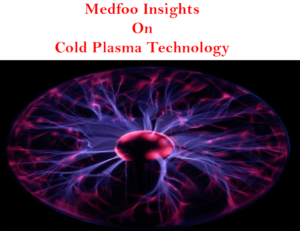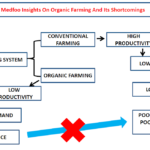Applications of Cold Plasma Technology in Food
The Cold plasma is a
novel nonthermal food processing technology that uses energetic, reactive gases
to inactivate contaminating microbes on meats, poultry, fruits, and vegetables.
This flexible sanitizing method uses electricity and a carrier gas, such as air,
oxygen, nitrogen, or helium; antimicrobial chemical agents are not required.
The primary modes of action are UV light and reactive chemical products
of the cold plasma ionization process. A wide array of cold plasma systems that
operate at atmospheric pressures or in low-pressure treatment chambers are
under development. Reductions of greater than 5 logs can be obtained for
pathogens such as Salmonella, Escherichia coli O157: H7, Listeria
monocytogenes, and Staphylococcus aureus. Effective treatment
times can range from 120 s to as little as 3 s, depending on the food treated
and the processing conditions. Key limitations for cold plasma are the
relatively early stage of technology development, the variety and complexity of
the necessary equipment, and the largely unexplored impacts of cold plasma
treatment on the sensory and nutritional qualities of treated foods. Also, the
antimicrobial modes of action for various cold plasma systems vary depending on
the type of cold plasma generated. Optimization and scale-up to commercial
treatment levels require a more complete understanding of these chemical
processes. Nevertheless, this area of technology shows promise and is the
subject of active research to enhance efficacy.
novel nonthermal food processing technology that uses energetic, reactive gases
to inactivate contaminating microbes on meats, poultry, fruits, and vegetables.
This flexible sanitizing method uses electricity and a carrier gas, such as air,
oxygen, nitrogen, or helium; antimicrobial chemical agents are not required.
The primary modes of action are UV light and reactive chemical products
of the cold plasma ionization process. A wide array of cold plasma systems that
operate at atmospheric pressures or in low-pressure treatment chambers are
under development. Reductions of greater than 5 logs can be obtained for
pathogens such as Salmonella, Escherichia coli O157: H7, Listeria
monocytogenes, and Staphylococcus aureus. Effective treatment
times can range from 120 s to as little as 3 s, depending on the food treated
and the processing conditions. Key limitations for cold plasma are the
relatively early stage of technology development, the variety and complexity of
the necessary equipment, and the largely unexplored impacts of cold plasma
treatment on the sensory and nutritional qualities of treated foods. Also, the
antimicrobial modes of action for various cold plasma systems vary depending on
the type of cold plasma generated. Optimization and scale-up to commercial
treatment levels require a more complete understanding of these chemical
processes. Nevertheless, this area of technology shows promise and is the
subject of active research to enhance efficacy.
Cold plasma (CP) is an emerging
technology, which has attracted the attention of scientists globally. It was
originally developed for ameliorating the printing and adhesion properties of
polymers plus a variety of usage domains in electronics. In the last decade,
its applications were extended into the food industry as a powerful tool for
non-thermal processing, with diverse forms for utilization.
technology, which has attracted the attention of scientists globally. It was
originally developed for ameliorating the printing and adhesion properties of
polymers plus a variety of usage domains in electronics. In the last decade,
its applications were extended into the food industry as a powerful tool for
non-thermal processing, with diverse forms for utilization.
Cold plasma
processing is an attractive technology for mild surface decontamination of
foods and packaging materials. Wageningen Food & Biobased Research develops
test units and proves that inactivation of micro-organisms is possible.
processing is an attractive technology for mild surface decontamination of
foods and packaging materials. Wageningen Food & Biobased Research develops
test units and proves that inactivation of micro-organisms is possible.
Cold plasma is
otherwise referred to as the 4th state of matter. When you apply enough energy
to a gas a plasma discharge can be achieved. It is estimated that 99% of the
known universe is in a plasma state. The sun and stars are examples of natural
plasmas. Man-made plasma can be generated at low temperatures typically by
applying a voltage to a gas. The electric field generated from the applied
voltage can accelerate any free electrons in the gas. Accelerated electrons
collide with gas atoms to excite or ionize them. Ionization of gas atoms
releases more electrons; this cascaded reaction can generate a rich abundance
of highly reactive chemical species that are capable of inactivating a wide
range of microorganisms including foodborne pathogens and spoilage organisms.
The diffuse reactive species revert back to an inert gas atom once the applied
voltage is removed.
otherwise referred to as the 4th state of matter. When you apply enough energy
to a gas a plasma discharge can be achieved. It is estimated that 99% of the
known universe is in a plasma state. The sun and stars are examples of natural
plasmas. Man-made plasma can be generated at low temperatures typically by
applying a voltage to a gas. The electric field generated from the applied
voltage can accelerate any free electrons in the gas. Accelerated electrons
collide with gas atoms to excite or ionize them. Ionization of gas atoms
releases more electrons; this cascaded reaction can generate a rich abundance
of highly reactive chemical species that are capable of inactivating a wide
range of microorganisms including foodborne pathogens and spoilage organisms.
The diffuse reactive species revert back to an inert gas atom once the applied
voltage is removed.
The cold plasma
technique uses cold gases to disinfect the surfaces of packaging or food
products. The technique has the potential to inactivate micro-organisms on the
surface of products and packaging materials at temperatures below 40 °C. Cold
plasma is attracting a lot of attention from the food industry. Hardly a
surprise, because many cleaning options are not heat-resistant, cleaning with
water is expensive and chemicals are often out of the question. But gas reaches
every nook and cranny.
technique uses cold gases to disinfect the surfaces of packaging or food
products. The technique has the potential to inactivate micro-organisms on the
surface of products and packaging materials at temperatures below 40 °C. Cold
plasma is attracting a lot of attention from the food industry. Hardly a
surprise, because many cleaning options are not heat-resistant, cleaning with
water is expensive and chemicals are often out of the question. But gas reaches
every nook and cranny.
plasma
Many research groups
that are active in the field of cold plasma for food applications use helium or
argon as the carrier gas. Wageningen Food & Biobased Research uses nitrogen.
Nitrogen-based gas plasma is virtually free of oxygen and thus ozone production
– which is anticipated to have a negative impact on product quality parameters
– is very limited. Nitrogen can be characterized as food-grade and is
ubiquitously present in the air. Furthermore, active species have a relatively
long lifetime of 1.6 seconds which results in a continuous afterglow of several
meters in length. This has the advantage that the nitrogen-based gas plasma can
be transported and therefore implementation in processing lines can be realized
without large modifications of the existing infrastructure.
that are active in the field of cold plasma for food applications use helium or
argon as the carrier gas. Wageningen Food & Biobased Research uses nitrogen.
Nitrogen-based gas plasma is virtually free of oxygen and thus ozone production
– which is anticipated to have a negative impact on product quality parameters
– is very limited. Nitrogen can be characterized as food-grade and is
ubiquitously present in the air. Furthermore, active species have a relatively
long lifetime of 1.6 seconds which results in a continuous afterglow of several
meters in length. This has the advantage that the nitrogen-based gas plasma can
be transported and therefore implementation in processing lines can be realized
without large modifications of the existing infrastructure.




